Welcome to thatlinuxbox.com Monday, December 22 2025 @ 08:33 AM UTC
Race The Tortoise 5k 2015 - Race Report
- Saturday, April 04 2015 @ 11:48 PM UTC
- Contributed by: Dan Stoner
- Views: 22,296

I earned my first "tortoise trophy" at the 2015 Race The Tortoise 5k at O'Leno State Park. This is always a nice event and a fast course.
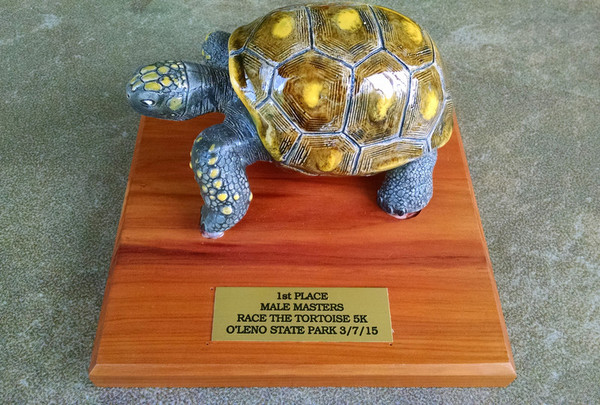
I just didn't have a lot of racing gumption in me that day but still managed a Masters win. Congrats to the woman and boy who finished ahead of me. Lyubov Denisova and Anton Matchev both ran strong races (also got tortoise trophies!). Here are the top 3 finisher results:
| Place | Bib # | Name | Finish Time | Pace per Mile | Gender | Age | Age Rank |
|---|---|---|---|---|---|---|---|
| 1 | 142 | LYUBOV DENISOVA | 17:57.7 | 5:46 | F | 43 | 1st Overall Female |
| 2 | 146 | ANTON MATCHEV | 18:15.6 | 5:52 | M | 11 | 1st Overall Male |
| 3 | 135 | DAN STONER | 18:24.4 | 5:55 | M | 40 | 1st Male Master |
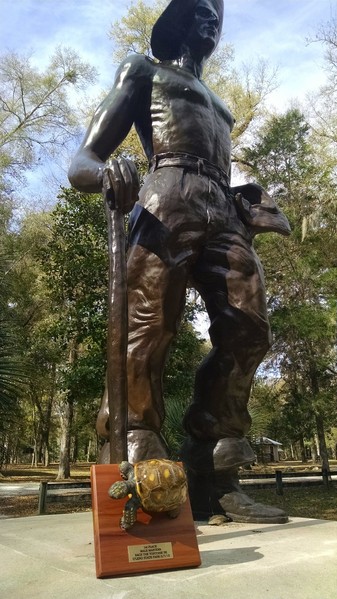
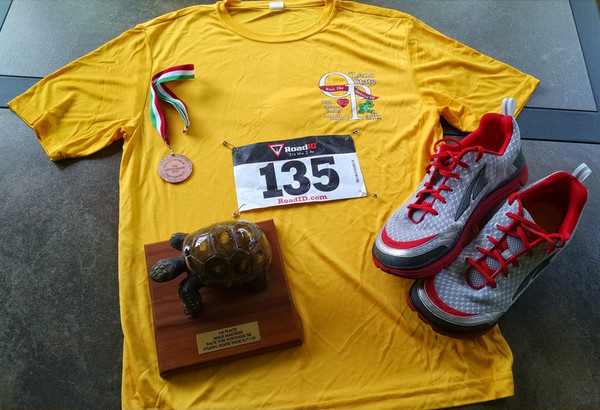
- Comments (0)
Robust Trail Shoes for the Minimalist-Minded, 2015 edition
- Sunday, March 15 2015 @ 01:52 PM UTC
- Contributed by: Dan Stoner
- Views: 4,948

I am not considering shoes with elevated heels and prefer to stick with zero drop shoes only. Elevated heels lead me to knee pain so I just stay away from them.
A friend gave me a used pair of The Lone Peak 1.5 shoes (the bright red ones). Of the three versions of The Lone Peak, I think I like the 1.5 best. It falls into the pile of Altra shoes that have a firm cushion rather than a soft pillowy ride. The Lone Peak 1.5 is no longer in production, so it does not make the list of shoes I could buy today (although I do still see them on ebay from time to time). I also tried the Altra Lone Peak 2.0 and it definitely feels more comfortable than the original Lone Peak but it didn't feel amazing so I sent it back.
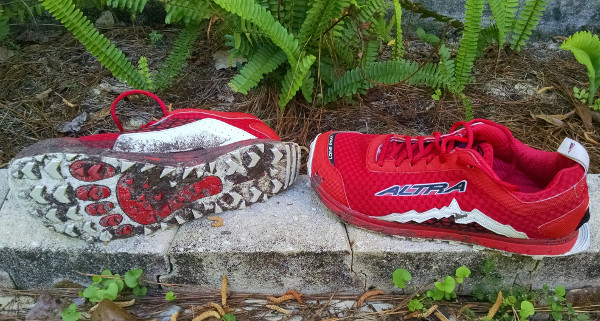
There are some other shoes I tried that won't work.
I have the Altra Olympus maximal cushion shoes but after some trial runs would never choose it for a technical trail race or on anything rugged due to traction issues and stack height.
I ruled out the Merrell Bare Access Trail because it felt just too constricted on my foot. I was a little sad because it really looked like a great shoe on paper and I have had good luck with other Merrells. I haven't seen any buzz about this shoe and there are only a few reviews online. For people whose feet fit well into Merrell's "bare" or "glove" lines, the Bare Access Trail *would* definitely be worth a look.
The New Balance Minimus v2 looked like a possibility with its bigger lugs but the photos and reviews online ruled that one out due to the terrible tight toebox. I really have no idea what New Balance was thinking with the Minimus v2.
As mentioned in Pre-run Review of the Inov-8 Trailroc 150 Minimalist Trail Shoes, there are possibly trail options from Vivobarefoot but no shoe that I have tried from that company has fit me correctly... the low cut around the ankle makes them impossible for me to secure to my foot. I am not sure if the latest models still have this issue but I haven't really even considered Vivobarefoot in recent months.
Above are the shoes that didn't make my list.
Here are my Top Three Robust Trail Shoes for the Minimalist-Minded, 2015 Edition:
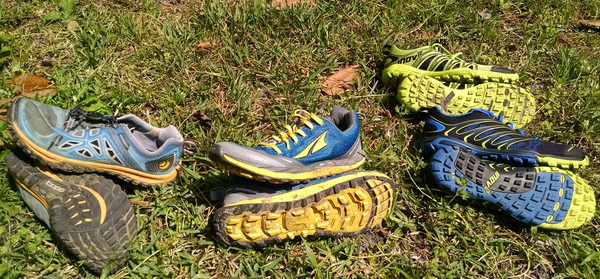
Keep reading for more details...
- read more (490 words)
- Comments (0)
Getting Started with Perl 6
- Wednesday, March 11 2015 @ 12:07 AM UTC
- Contributed by: Dan Stoner
- Views: 9,248

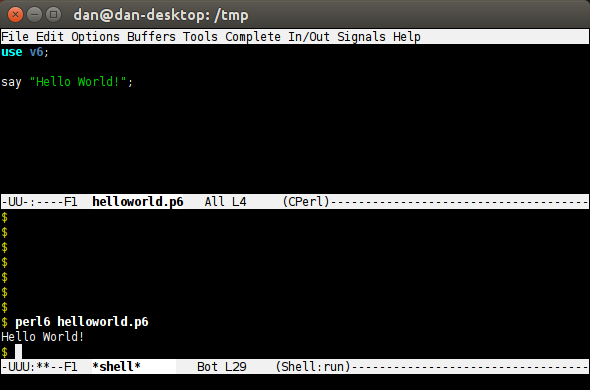
The goal of this blog post is to document the steps needed to install and run Rakudo Perl, which is a "useful and usable distribution" of Perl 6
The #perl6 IRC channel on freenode has been very active the few times I popped in with questions and I was able to get them answered very quickly. Larry Wall announced that he wants to release Perl 6 by Christmas 2015 ( http://http://blogs.perl.org/users/shadowcat_mdk/2015/02/fosdem-2015-its-christmas.html ) and at this point it seems like the Perl 6 community is moving along on its merry way towards that goal. The Perl 6 design documents are interesting ( http://design.perl6.org/ ), especially the Apocolypse docs which talk about the various aspects compared to Perl 5 and nice tidbits such as "Larry's First Law of Language Redesign."
Perl 6 even has its own logo:

Ubuntu and Debian already contain Perl 6 in their repositories. The 'rakudo' package description on Ubuntu 14.04 is "Perl 6 implementation on top of Parrot virtual machine". I did not test this but it should be easily installable via:
- read more (991 words)
- Comments (0)
Review - SKINS A200 Compression Tights
- Sunday, February 22 2015 @ 01:37 AM UTC
- Contributed by: Dan Stoner
- Views: 13,384

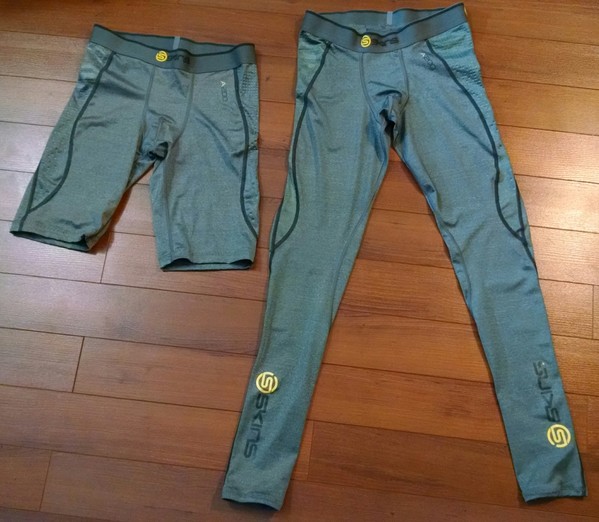
David Laney advises "wear pants" if the temps are under 50 degrees (http://davidlaneyrunning.com/tag/elite-marathon/) and I tend to follow this advice unless I am racing.
And some days are just meant for purple shorts and a sock monkey hat:
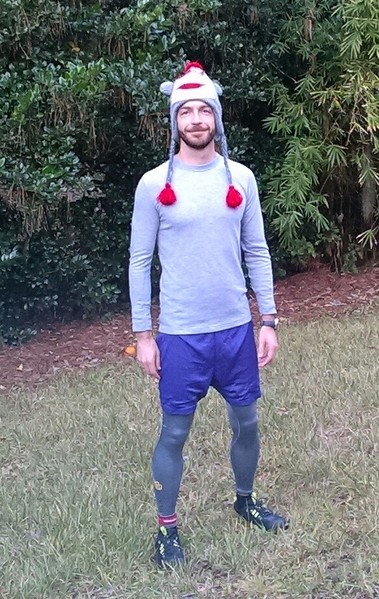
The photo above shows the "shorts over tights" mode of attire, which is either completely appropriate or a fashion faux pas, depending on whom you ask. When making this decision for yourself you should be aware that compression tights are definitely more revealing than standard running tights. Running tights (the kind that tend to come with a pocket in the back for gels and zippers at the bottom by the feet openings) tend to be a little thicker and not quite as revealing in the crotch area. The first time my wife noticed me in my compression tights she laughed and then asked "Did you wear those in public?"
Yes. Yes, I did. But I did try to research the "proper" way to wear them first. Apparently men in tights are offensive to some people. So basically, just dress however you feel comfortable.
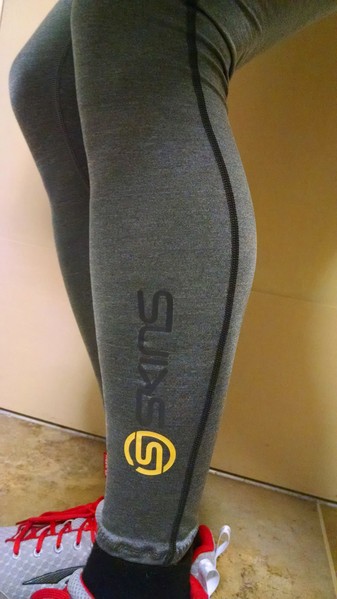
Now, to cover the specifics of the A200 Compression tights I will quote from my own training log (a 9 mile run):
- read more (386 words)
- Comments (0)
Two websites for HTTP responses and status codes
- Saturday, February 21 2015 @ 11:40 PM UTC
- Contributed by: Dan Stoner
- Views: 3,359

The first web site is HTTP Status Codes, which as you might be able to guess provides documentation about the various HTTP status codes:
http://httpstatus.es/
Screenshots:
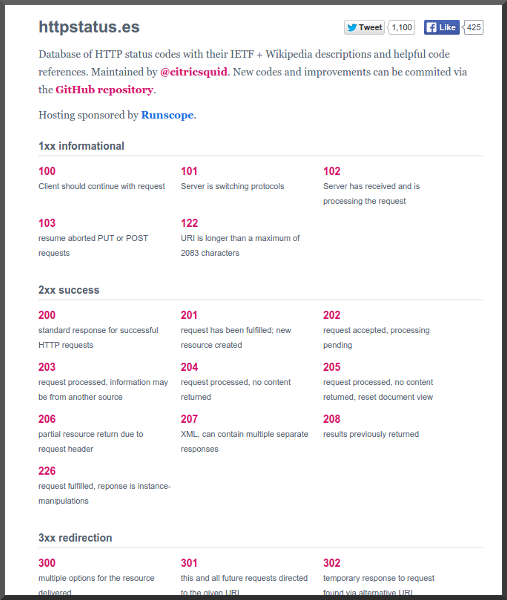
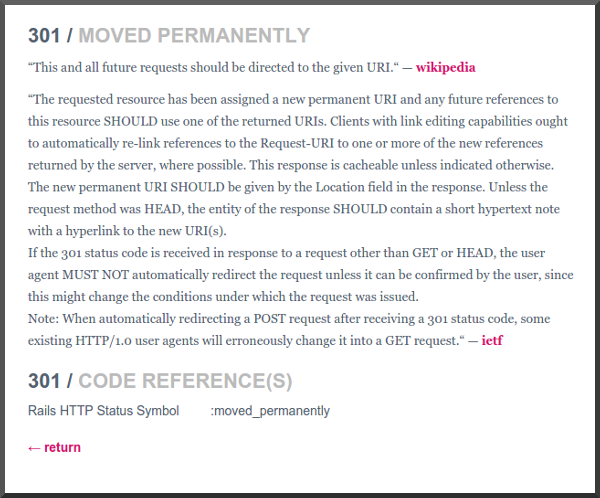
The second site is the HTTP Client Testing Service, or httpbin. The httpbin site provides endpoints that return all of the various HTTP status codes as well as particular content type responses.
http://httpbin.org/
Screenshots:
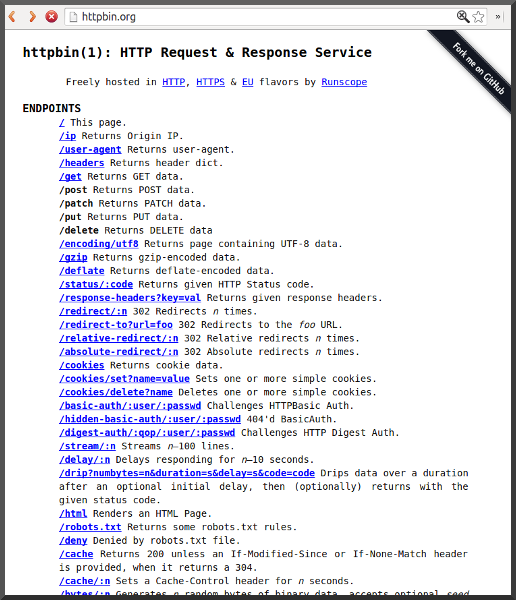
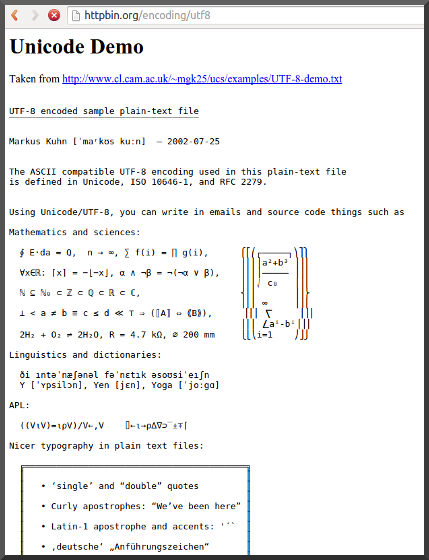
Both websites have an accompanying github repository (you can find links on the sites themselves) if you would like to contribute or see the source code.
- Comments (0)
Export entries from dailymile with my export tool
- Saturday, February 21 2015 @ 01:43 PM UTC
- Contributed by: Dan Stoner
- Views: 22,673

I have been using dailymile as my fitness training log since 2010. I have now logged over 1500 entries and 6600 miles total. I don't want to lose that information. I would like to be able to do more advanced anlalytics on my personal fitness data than the dailymile web app provides.
The built-in dailymile.com export feature is abysmal. The file generated includes only a small number of fields (date, activity_type, distance, time, felt, elevation_gain). Seriously, they include elevation gain but do not include the name of the workout or the description?
Because of these limitations, I contacted dailymile support. The response was something along the lines of "you could always write your own tool using the API." So I did.
Announcing v1.1 of my dailymile export tool. The current version is written in Python. The software archive can be downloaded from:
https://github.com/danstoner/dailymile_export/releases
The github repo for the project is located:
https://github.com/danstoner/dailymile_export
Here is the basic usage info:
$ python dailymile_export_to_tsv.py -h
usage: dailymile_export_to_tsv.py [-h] [-d] [-g] username
Script to download entries from the dailymile API for a particular user into a
tab-delimited file.
positional arguments:
username The dailymile.com username of the account to export.
optional arguments:
-h, --help show this help message and exit
-d, --debug Enable debug level logging.
-g, --gear Retrieve gear data also.
Here is some sample output of the running script and the generated output file:
- read more (402 words)
- Comments (0)








 Twitter
Twitter
 LinkedIn
LinkedIn
 GitHub
GitHub


